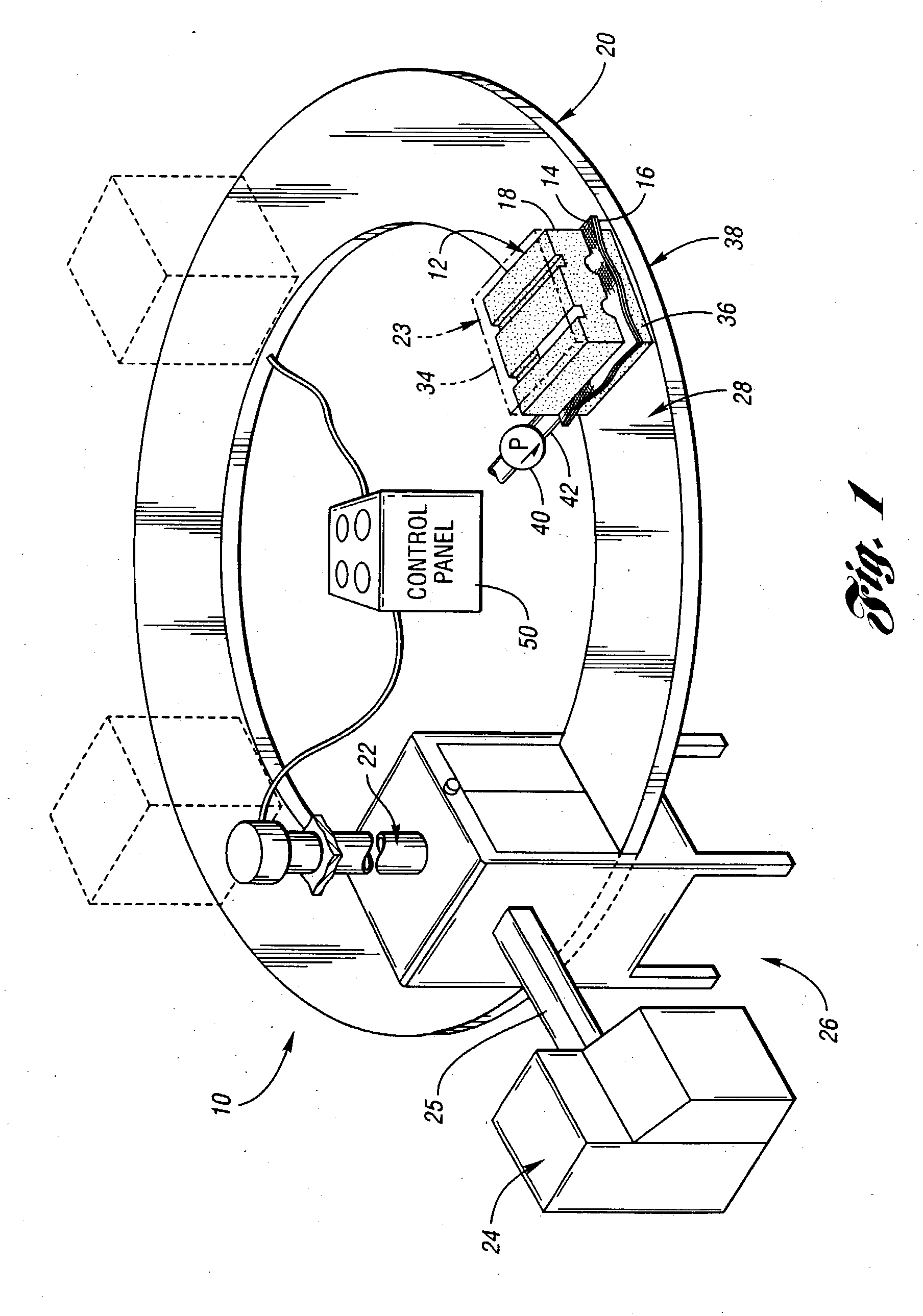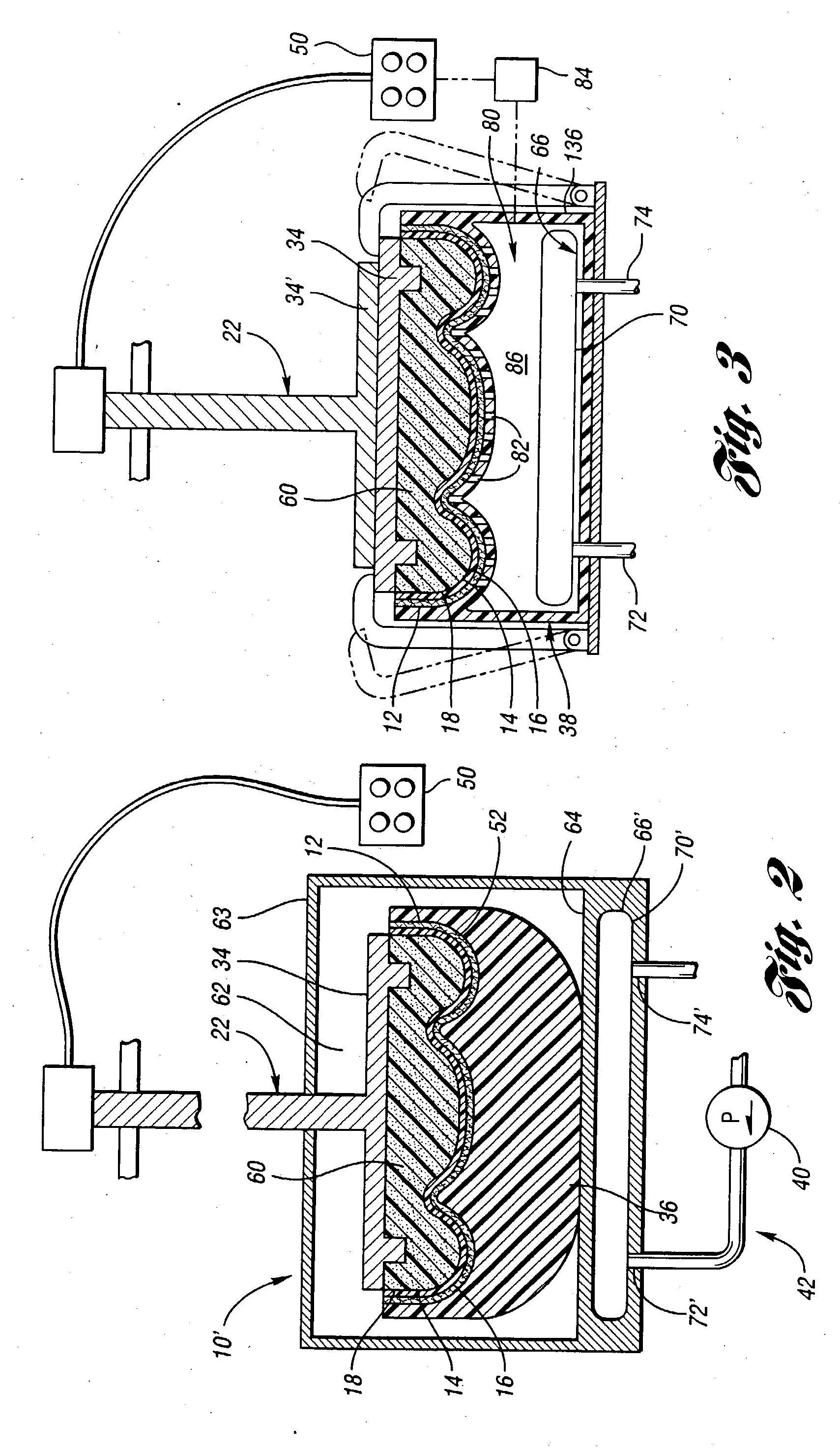Method and apparatus for bonding a cover to a substrate using high frequency microwaves
- Summary
- Abstract
- Description
- Claims
- Application Information
AI Technical Summary
Benefits of technology
Problems solved by technology
Method used
Image
Examples
Embodiment Construction
[0016] Referring first to FIG. 1, an apparatus 10 constructed in accordance with the present invention is shown. The apparatus 10 includes an assembly 12 comprising a heat-sensitive adhesive layer 14 disposed between a covering layer 16 and a support 18. The apparatus 10 also includes process tooling 20, including forming or pressing apparatus, or both, acting to join the layers 14, 16, 18 together and including apparatus for applying microwave radiation for absorption at the adhesive 14 which actuates the adhesive, for example, by heating and changing the phase of the adhesive, to bond the layer 16 to the support 18. The process tooling 20 may also include apparatus that positions the layers of the assembly 12 together for applying microwave radiation to activate the adhesive layer 14 to join the support 18 to the covering 16.
[0017] Preferably, the process tooling 20 includes a press 22 and a microwave source 24. Both the press 22 and the microwave source 24 may be supplied at a wo...
PUM
| Property | Measurement | Unit |
|---|---|---|
| Frequency | aaaaa | aaaaa |
| Frequency | aaaaa | aaaaa |
| Transparency | aaaaa | aaaaa |
Abstract
Description
Claims
Application Information
 Login to View More
Login to View More - R&D
- Intellectual Property
- Life Sciences
- Materials
- Tech Scout
- Unparalleled Data Quality
- Higher Quality Content
- 60% Fewer Hallucinations
Browse by: Latest US Patents, China's latest patents, Technical Efficacy Thesaurus, Application Domain, Technology Topic, Popular Technical Reports.
© 2025 PatSnap. All rights reserved.Legal|Privacy policy|Modern Slavery Act Transparency Statement|Sitemap|About US| Contact US: help@patsnap.com



